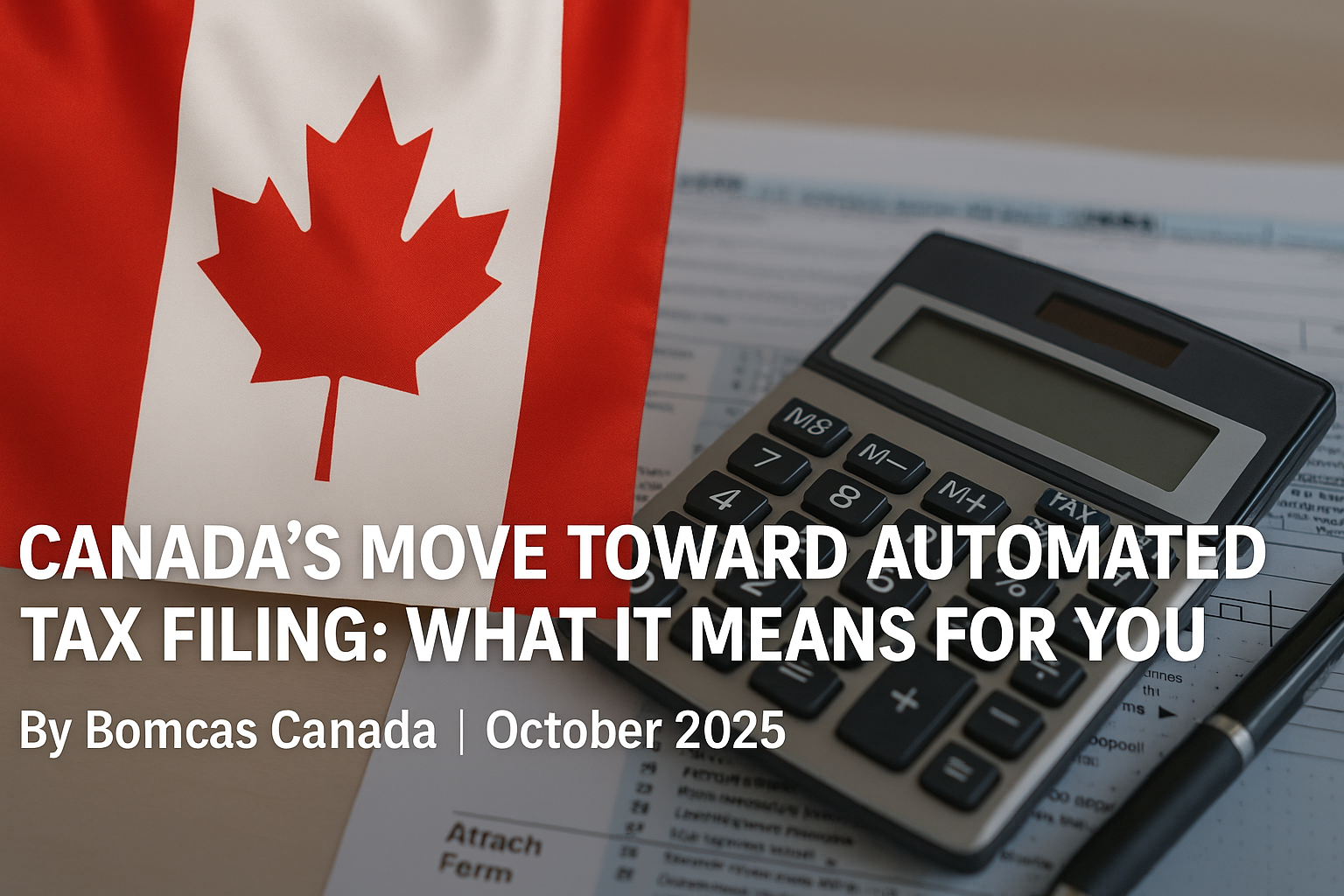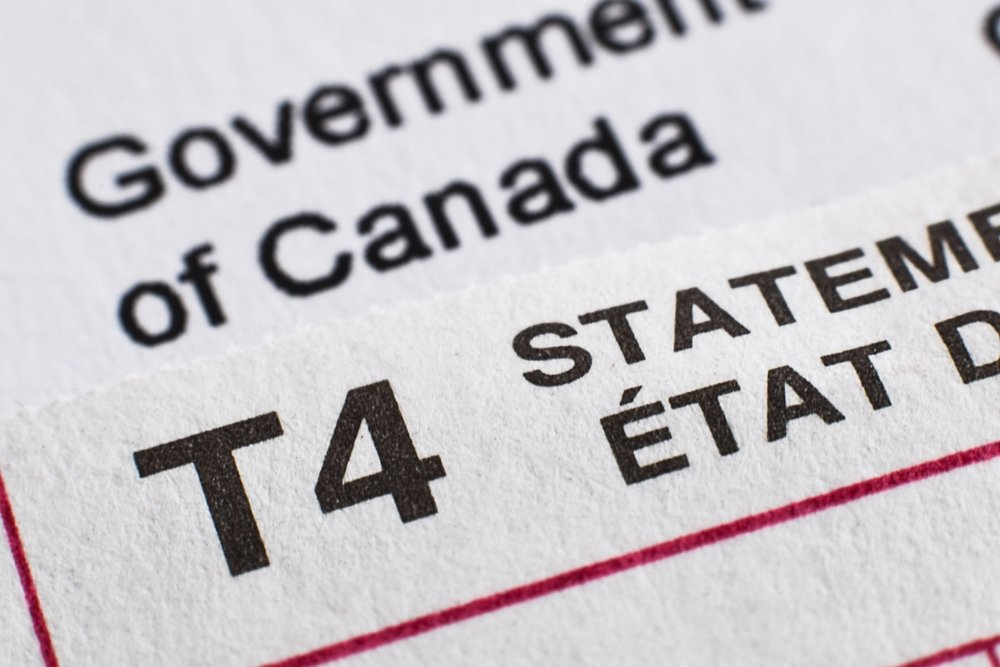Navigating the complexities of business registration in Canada can be daunting, especially when it comes to understanding when you need a business number or Canada Revenue Agency program accounts. This crucial step in establishing a legal entity has a significant impact on business operations, from tax matters to payroll management. For small-business owners and corporations alike, grasping the intricacies of business number registration is essential to ensure compliance with CRA obligations.
This comprehensive guide sheds light on the key aspects of obtaining a business number in Canada and registering for CRA program accounts. It explores the various scenarios that necessitate a business number, delves into the different types of program accounts available, and provides insights on how to register for a BN. Additionally, the article covers the information required for registration, offers guidance on managing your business number, and clarifies the nuances of GST/HST registration for businesses of all sizes.
What is a Business Number (BN)?
A Business Number (BN) is a unique 9-digit identifier assigned by the Canada Revenue Agency (CRA) to businesses and self-employed individuals operating in Canada. This number serves as a standard identifier for tax and other government program purposes. The BN stays with a business or organization throughout its operational lifetime, without any fees or renewal processes.
The CRA uses the BN to identify businesses for various purposes, including:
- Filing tax returns
- Making tax payments
- Applying for government grants and licenses
- Interacting with federal, provincial, and municipal governments
Types of Businesses Requiring a BN
Several types of businesses and individuals need a Business Number:
- Incorporated companies
- Sole proprietors
- Partnerships
- Societies
Program Accounts
The BN is not just a standalone identifier; it also serves as the foundation for program accounts. These accounts are specific registrations with government agencies that add letters and/or numbers to the BN. Here’s how it works:
- The basic 9-digit BN is called a BN9.
- Program accounts extend the BN9 to create a 15-character identifier, known as a BN15.
For example:
123456789 (BN9) | Basic 9-digit Business Number
123456789BW0001 (BN15) | Program number for WorkSafeBC registration
Government Agencies Using BN15
Several government agencies use the BN15 to identify incorporated businesses:
- BC Registries and Online Services
- Canada Revenue Agency
- Payroll and Imports/Exports
- Liquor Control and Licensing Branch
- GST/HST
- WorkSafeBC
- BCeID Program
When You Need a Business Number
A business requires a BN in the following situations:
- For federal taxes and other government registrations, such as:
- WorkSafeBC
- PST
- GST
- Corporate income tax
- Payroll deductions
- Import/export tax with CRA
- If you’re a sole proprietor or in a partnership and need CRA program accounts, including:
- GST/HST accounts
- Payroll accounts
- Import/export accounts
- If your business is incorporated
- To interact with other federal, provincial, and municipal governments in Canada
It’s important to note that new B.C. corporations, businesses, or societies automatically receive a business number as part of the registration or incorporation process.
Obtaining a Business Number
There are two primary ways to obtain a Business Number:
- Automatic Assignment: New B.C. corporations, businesses, or societies receive a BN automatically during the registration or incorporation process.
- Program Account Registration: If you don’t already have a BN, registering for a CRA program account will generate one for you. If you already have a BN, the new program account will be added to your existing number.
Remember, a business will only ever have one Business Number. Any additional program codes or reference numbers are simply added to this base BN to indicate specific account types.
When Do You Need a Business Number?
Understanding when a business number is required is crucial for entrepreneurs and business owners operating in Canada. A business number serves as a unique identifier assigned by the government for tax purposes and official records. The necessity for a business number depends on various factors, including the business structure, location, and specific activities.
Business Structures Requiring a Business Number
Regardless of the business structure, operating a business in Canada typically requires a business number. This applies to:
- Sole proprietorships
- Partnerships
- Corporations
Types of Business Numbers
The type of business number needed varies based on the business’s location:
- Business Number (BN): A 9-digit number assigned by the Canada Revenue Agency (CRA) for businesses outside Québec.
- Québec Enterprise Number (NEQ): A 10-digit number assigned by Revenu Québec for businesses in Québec.
Businesses located in Québec require both a BN and an NEQ.
Program Accounts
The CRA uses program accounts to categorize specific business activities. Registering for these accounts often necessitates a business number. Common program accounts include:
- GST/HST (RT): For businesses collecting GST/HST
- Payroll deductions (RP): For incorporated businesses paying employees
- Corporation income tax (RC): For incorporated businesses
- Import-export (RM): For businesses involved in international trade
Scenarios Requiring a Business Number
A business number becomes necessary in the following situations:
- Incorporation: All incorporated businesses require a BN.
- Program Account Requirements: Sole proprietors or partnerships needing CRA program accounts must obtain a BN.
- GST/HST Collection: Businesses collecting GST/HST need a BN with a GST/HST program account.
- Payroll Management: Businesses with employees, including self-employed individuals paying themselves, require a BN with a payroll program account.
- International Trade: Businesses involved in importing or exporting goods/services need a BN with an import-export program account.
- Government Interactions: A BN may be necessary for interactions with federal, provincial, and municipal governments in Canada.
Obtaining a Business Number
The process of acquiring a business number is straightforward and can be completed through various channels:
- Online application
- Mail-in application
- In-person application
The appropriate government agency for application depends on the type of business number needed and the business’s location.
It’s important to note that a business will only ever have one business number. Additional program codes or reference numbers are simply added to the existing BN to indicate specific account types. This system streamlines business identification across various government agencies and programs.
By understanding when a business number is required, entrepreneurs can ensure compliance with Canadian regulations and facilitate smooth interactions with government agencies. Whether starting a new venture or expanding existing operations, obtaining the necessary business number is a fundamental step in establishing a legal and recognized business entity in Canada.
Types of CRA Program Accounts
The Canada Revenue Agency (CRA) offers several types of program accounts, each designed to serve specific financial purposes and requirements. These accounts provide Canadians with various options to save money, plan for the future, and enjoy tax benefits. Here’s an overview of the main types of CRA program accounts:
- Registered Retirement Savings Plan (RRSP)
An RRSP is a tax-deferred savings account that allows individuals to save for their retirement. This account has two primary benefits:
- Tax-deductible contributions: The amount contributed to an RRSP can be deducted from the individual’s taxable income for the year.
- Tax-sheltered investment income: Any investment income earned within the RRSP is not taxed until withdrawal.
RRSPs are particularly beneficial for those who expect to be in a lower tax bracket during retirement compared to their working years.
- Tax-Free Savings Account (TFSA)
A TFSA is a flexible, registered savings account that provides Canadians with the opportunity to earn tax-free investment income. Key features of a TFSA include:
- Non-tax-deductible contributions: Unlike RRSPs, contributions to a TFSA are not tax-deductible.
- Tax-free withdrawals and investment income: Any withdrawals from a TFSA, including investment income, are completely tax-free.
TFSAs offer greater flexibility compared to RRSPs, as they allow for tax-free withdrawals at any time without penalties.
- Registered Education Savings Plan (RESP)
An RESP is a savings account specifically designed to help parents and others save for a child’s post-secondary education. Key aspects of an RESP include:
- Non-tax-deductible contributions: Contributions to an RESP are not tax-deductible.
- Tax-sheltered investment income: The investment income earned within the plan is tax-sheltered until withdrawal.
- Government grants: RESPs may be eligible for additional government grants, such as the Canada Education Savings Grant (CESG).
RESPs provide a tax-efficient way to save for education expenses while potentially benefiting from government incentives.
- Registered Disability Savings Plan (RDSP)
An RDSP is a savings plan that helps Canadians with disabilities and their families save for the future. Important features of an RDSP include:
- Non-tax-deductible contributions: Contributions to an RDSP are not tax-deductible.
- Tax-sheltered investment income: The investment income earned within the plan is tax-sheltered until withdrawal.
- Government grants and bonds: RDSPs may be eligible for additional government support through grants and bonds.
RDSPs provide a valuable tool for long-term financial planning for individuals with disabilities.
Each of these CRA program accounts offers unique advantages and serves different financial goals. When choosing the most appropriate account, individuals should consider their specific financial situation, long-term objectives, and tax implications. It’s advisable to consult with a financial advisor or tax professional to determine the best strategy for utilizing these accounts effectively.
By understanding the various types of CRA program accounts available, Canadians can make informed decisions about their financial future and take advantage of the tax benefits and savings opportunities provided by these accounts. Whether saving for retirement, education, or managing finances with a disability, these program accounts offer tailored solutions to meet diverse financial needs.
How to Register for a Business Number
Registering for a Business Number (BN) is a crucial step for entrepreneurs and business owners in Canada. This unique 9-digit identifier serves as a key to various tax-related activities and government services. The process is designed to be straightforward and accessible, with multiple options available to suit different preferences.
Online Registration
The most efficient method to obtain a BN is through the Canada Revenue Agency’s (CRA) Business Registration Online (BRO) service. This platform offers a user-friendly interface that guides applicants through the registration process. To complete the online application, individuals need to provide the following information:
- Social Insurance Number (SIN)
- Last name
- Date of birth
- Postal code of residential address
- Registered business name
- Type of business (e.g., sole proprietor, partnership, corporation, trust)
- Names and SINs of owners
- Phone number
- Physical address
- Mailing address (if different from physical address)
- Description of major business activity
The online registration process typically takes about 15 minutes to complete, making it a time-efficient option for busy entrepreneurs.
Mail or Fax Registration
For those who prefer traditional methods, registering by mail or fax is also possible. Applicants can complete an RC1 form, which can be obtained from the CRA website or local tax services office. Once filled out, the form should be mailed or faxed to the nearest tax services office. This method may take longer than online registration, but it provides an alternative for those who are not comfortable with digital processes.
Telephone Registration
Another convenient option is to register for a BN by phone. Individuals can call the CRA’s dedicated business line at 1-800-959-5525 to speak with a representative who will guide them through the registration process. This method is particularly useful for those who have questions or need assistance during the application.
Required Information
Regardless of the chosen method, applicants need to provide specific information about their business to complete the registration process. This includes:
- Legal name of the business
- Business structure (sole proprietorship, partnership, corporation, etc.)
- Contact information (address, phone number, email)
- Industry or type of business
- Estimated annual revenue or number of employees
- Tax identification number (if applicable)
- Details about any required business licenses or permits
Post-Registration Process
Once the registration is complete, the CRA typically takes about two weeks to process the application. Upon approval, businesses receive their unique 9-digit BN, which serves as their identifier for tax purposes and other government interactions. This number is essential for registering for additional business accounts, such as GST/HST, payroll, or corporate income tax accounts.
It’s important to note that registering for a BN is a fundamental step in establishing a legal business entity in Canada. It ensures compliance with tax requirements and provides access to various government programs and services. The BN also facilitates interactions with federal, provincial, and municipal government agencies, streamlining administrative processes for businesses of all sizes.
By understanding the registration process and having the necessary information at hand, entrepreneurs can efficiently obtain their Business Number and take the first step towards establishing their business in the Canadian market.
Information Required for BN Registration
When registering for a Business Number (BN) in Canada, entrepreneurs need to provide specific information to the government. This process ensures that businesses are properly identified and can interact with various government agencies efficiently. The information required for BN registration is comprehensive and covers several aspects of the business entity.
Basic Business Information
- Legal Name: The official name under which the business is registered.
- Operating Name: Any trade names or alternative names used by the business.
- Business Structure: The type of business entity (sole proprietorship, partnership, corporation, etc.).
- Start Date: The date when the business was started or incorporated.
- Business Activities: A description of the nature of business operations.
- NAICS Code: The North American Industry Classification System code that best represents the business’s primary activity.
Contact Information
- Physical Address: The actual location where the business operates.
- Mailing Address: If different from the physical address.
- Phone Number: A primary contact number for the business.
- Email Address: An official email address for business communications.
Ownership Details
- Owner Information: Names and contact details of business owners or authorized representatives.
- Social Insurance Numbers (SINs): Required for sole proprietors and partners.
Tax Information
- GST/HST Number: If the business is registered for Goods and Services Tax/Harmonized Sales Tax.
- Corporate Tax Number: For incorporated businesses.
Additional Requirements
Depending on the province or territory, additional information may be necessary. It’s crucial to check with the specific provincial or territorial requirements when registering a business.
Document Submission
To complete the BN registration process, certain documents must be submitted:
- Business Registration Document: An official document proving the business’s legal existence.
- Sales Tax (GST/HST) Registration or Filing: This document must be recent, typically from 2019/2020 or later.
Important notes regarding document submission:
- All documents must display an official stamp, logo, or other identifying details from the issuing agency.
- Handwritten documents are not accepted.
- The GST/HST document and business registration document must be valid and up-to-date.
Registration Methods
Businesses can register for a BN through various channels:
- Online: Using the Business Registration Online (BRO) service.
- By Phone: Contacting the Canada Revenue Agency (CRA) directly.
- By Mail or Fax: Submitting a completed RC1 form to the nearest tax services office.
Program Accounts
When registering for a BN, businesses may also need to set up specific program accounts with the CRA:
- GST/HST (RT): For businesses collecting GST/HST.
- Payroll Deductions (RP): For businesses with employees.
- Corporation Income Tax (RC): For incorporated businesses.
- Information Returns (RZ): For filing various information returns.
- Registered Charity (RR): For charitable organizations.
- Underused Housing Tax (RU): For corporations filing Underused Housing Tax returns.
It’s important to note that a business can only have one BN. If a business already has a BN and needs to register for additional program accounts, these will be added to the existing BN rather than creating a new one.
By providing accurate and complete information during the BN registration process, businesses ensure compliance with Canadian regulations and facilitate smooth interactions with government agencies. This comprehensive approach to business registration helps establish a solid foundation for operations within the Canadian market.
Registering for Program Accounts
When registering for program accounts with the Canada Revenue Agency (CRA), businesses need to provide specific information and follow certain procedures. This process is essential for managing various aspects of business operations, including taxes, payroll, and import/export activities.
GST/HST Account
To register for a Goods and Services Tax/Harmonized Sales Tax (GST/HST) account, businesses should be aware of the following:
- Information availability: The CRA provides comprehensive guidance through Guide RC4022, “General Information for GST/HST Registrants.”
- Access to resources: This guide can be obtained from the CRA website at www.canada.ca .
- Content overview: The guide explains how GST/HST works, helping businesses understand their obligations and rights.
Payroll Account
For businesses that need to register for a payroll account, the following information is crucial:
- Resource availability: Guide T4001, “Payroll Deductions and Remittances,” is available on the CRA website at www.canada.ca .
- Guide contents: This comprehensive resource covers details about income tax, Canada Pension Plan contributions, Quebec Pension Plan contributions, and Employment Insurance premiums.
- Deduction tables: The CRA also provides payroll deduction tables to assist employers in calculating employee deductions accurately.
- Remittance deadlines: For most employers, deducted amounts must be received by the CRA on or before the 15th day of the month following the month of deduction.
Import/Export Account
Businesses involved in international trade should consider the following when registering for an import/export account:
- Registration requirement: An import/export account is necessary for businesses importing commercial shipments from foreign countries or exporting commercial goods to other countries.
- Account usage: The CRA uses the import/export account number to process customs documents.
- Timing: To avoid delays in releasing goods at the border, businesses should open their account before engaging in import or export activities.
Corporation Income Tax Account
For corporations looking to register for an income tax account, the process involves:
- Registration method: Completing Part E of the registration form.
- Automatic registration: In most cases, new corporations automatically receive a Business Number (BN) from the CRA within 45 days of incorporating at the federal or provincial level.
- Required documentation: All corporations must provide a copy of their certificate of incorporation or amalgamation, or complete Part E2 of the form with their certificate number, date of incorporation or amalgamation, and jurisdiction (federal, provincial, or foreign).
General Registration Process
When registering for any program account, businesses should be prepared to:
- Provide basic information: This includes the business owner’s name, contact information, and details about the type of business operation.
- Submit necessary documentation: Depending on the program, additional documents may be required to verify identity and authority to act on behalf of the organization.
- Await approval: Program administrators will review the application to determine eligibility.
- Receive access credentials: Upon approval, businesses will receive login information to access the program’s online portal or dashboard.
Managing Program Accounts
Once registered, businesses should:
- Keep information up-to-date: Regularly update profile and business information within the program account.
- Access benefits: Utilize any resources, discounts, or networking opportunities offered by the program.
- Stay informed: Regularly check for updates to program requirements or offerings to ensure continued compliance and maximize benefits.
By understanding and following these guidelines, businesses can efficiently register for the necessary CRA program accounts, ensuring compliance with Canadian regulations and smooth operations in various aspects of their business activities.
Managing Your Business Number
A Business Number (BN) is a crucial identifier for businesses operating in Canada. This 9-digit number, assigned by the Canada Revenue Agency (CRA), simplifies interactions between businesses and various levels of government. It serves as the primary identifier for an increasing number of provincial programs, with the CRA forming partnerships in British Columbia, Ontario, Nova Scotia, New Brunswick, and Manitoba.
Each business entity, whether a sole proprietorship, partnership, or corporation, receives one BN. Sole proprietors use a single BN for all their businesses, except those registered under a partnership, trust, or corporation. Organizations such as trusts, clubs, and charities may also obtain a BN if they need to register for GST/HST.
Before registering for a BN, business owners should make several important decisions:
- Choose a business name
- Determine the physical location
- Decide on the legal structure (sole proprietorship, partnership, or corporation)
- Establish the fiscal year-end
- Estimate projected sales
This information is essential for the BN registration process and helps ensure accurate record-keeping from the start.
Registration Methods
Business owners have four options to register for a BN and CRA program accounts:
- Online: Through Business Registration Online (BRO)
- Telephone: Call 1-800-959-5525
- Mail: Submit a paper application
- Fax: Send completed forms via fax
The online registration method, BRO, offers several advantages:
- One-stop service: Register for multiple programs with different government levels in a single session
- Convenience: Available from anywhere in Canada, outside normal business hours, including Saturdays
- User-friendly interface: Guided questions and helpful features like pop-up messages for missing or incorrect information
- Secure: Advanced encryption and security procedures protect private information
Importance of the Business Number
The BN plays a vital role in various business activities:
- Opening a business bank account
- Applying for licenses and permits
- Invoicing customers
- Interacting with government agencies
- Tracking business activities for tax purposes
For sole proprietors, the BN may be the same as their Social Insurance Number (SIN). Partnerships and corporations receive a unique BN.
Proper Use and Security
Business owners should include their BN on all business documents, including:
- Invoices
- Contracts
- Tax forms
It’s crucial to keep the BN secure, as it can be used to access sensitive business information. Proper management of the BN helps maintain the integrity of business operations and ensures compliance with government regulations.
Ongoing Management
Effective management of a BN involves:
- Keeping information up-to-date: Regularly review and update business details with the CRA
- Using the BN consistently: Include it on all relevant business documents and communications
- Protecting the BN: Safeguard it to prevent unauthorized access to business information
- Understanding program accounts: Familiarize yourself with the various CRA program accounts associated with your BN
By properly managing their Business Number, Canadian business owners can streamline their interactions with government agencies, simplify tax-related processes, and maintain compliance with regulatory requirements. This unique identifier serves as a cornerstone for efficient business operations and financial management in the Canadian business landscape.
Conclusion
Understanding the intricacies of Business Numbers and CRA program accounts is crucial for entrepreneurs and business owners in Canada. This knowledge enables them to navigate the complex landscape of business registration, tax compliance, and government interactions with confidence. By grasping when and how to obtain a BN, as well as registering for various program accounts, businesses can ensure they meet their legal obligations and access essential services.
The journey of managing a Business Number and associated program accounts is ongoing, requiring attention to detail and regular updates. As businesses grow and evolve, their needs may change, necessitating adjustments to their CRA registrations. BOMCAS, a Canadian accounting firm, offers expertise when dealing with business numbers and Canada Revenue Agency program accounts in Canada. To wrap up, staying informed about BN requirements and program account options has a significant impact on a business’s ability to operate smoothly within the Canadian regulatory framework.










 View Our Location
View Our Location





 181 Meadowview Bay, Sherwood Park, AB T8H 1P7, Canada (Online Clients Only)
181 Meadowview Bay, Sherwood Park, AB T8H 1P7, Canada (Online Clients Only)